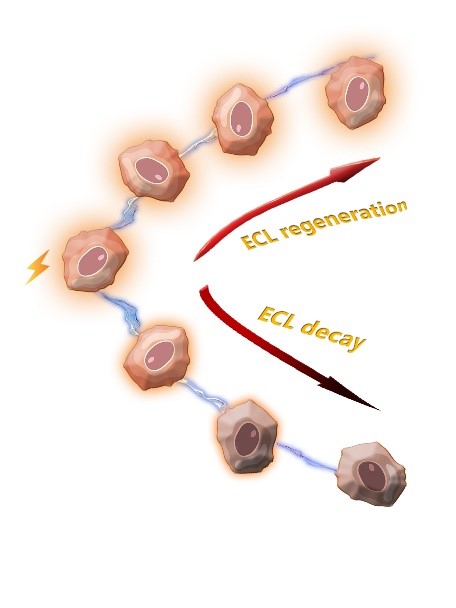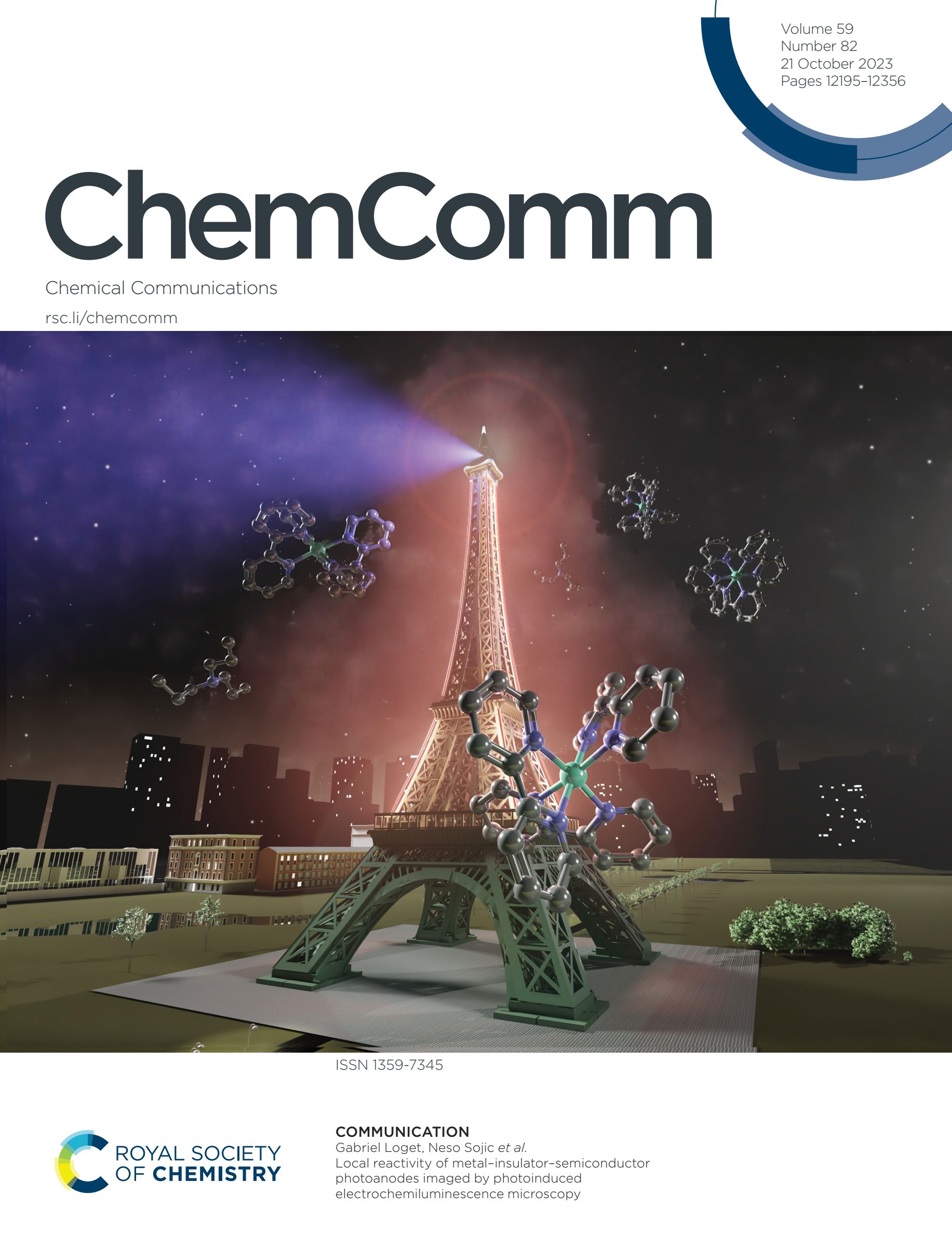D. Han, B. Goudeau, D. Jiang, D. Fang, N. Sojic
Anal.Chem., 2021, DOI: 10.1021/acs.analchem.0c05123
Electrochemiluminescence (ECL) microscopy is successfully applied to image cells, micro/nano-objects and electrochemical processes at electrode surfaces. The classic ECL tandem system is composed of the [Ru(bpy)3]2+ luminophore with the very efficient tripropylamine (TPA) coreactant. The dramatic decrease of the ECL signal observed when recording successive ECL images constitutes a key limitation for the development of ECL microscopy. Herein, we investigated the progressive decrease of the ECL signal of Chinese Hamster Ovary (CHO) cells. The plasma membranes of CHO cells were labeled with a [Ru(bpy)3]2+ derivative and the ECL images were recorded using the TPA coreactant. We demonstrate that the loss of ECL signal is related to the electrochemical step due to a progressive lower TPA oxidation current. We tested a cathodic regenerative treatment of the electrode surface, which allowed us to restore the initial TPA oxidation intensity and thus to record a sequence of ECL images without any vanishing of the light signal. The electrochemical approach presented here is an essential step for the development of ECL microscopy of cells.







